Have you ever wondered, “Why is my cat meowing so much?” Your cat’s chatter could be more than a quirky habit—it might be telling a story you need to hear. From simple hellos to medical alerts, cats meow for reasons that go deeper than we realize. Join us as we unravel the hidden messages behind those irresistible meows and empower you to decode and respond to your feline friend’s vocal language.
Why Is My Cat Meowing So Much? An Introduction to Cat Meow Behavior
If the constant sound of cat meowing echoes around your home, you’re not alone. Cats meow to communicate with their owners more than with each other—an adult cat won’t usually “speak” to other cats with a meow. Instead, they develop a special vocal language just for humans, often leaving owners to decode a variety of chirps, trills, and persistent meows. Whether your cat is meowing at dawn for breakfast or following you around the house with endless cat meows, understanding their motivation is the first step toward a calm, happy household.
Excessive meowing can suggest anything from hunger cues and attention-seeking to underlying medical conditions or stress. While some cat breeds are naturally more talkative—think Siamese or Bengals—others may develop vocal habits due to lifestyle changes or age. Recognizing the difference between normal and excessive meowing means listening for changes in volume, frequency, or context. Our comprehensive guide explores the common reasons behind persistent vocalizations and offers practical insights, so you’ll know exactly when to be concerned and how to respond to your cat’s unique voice.
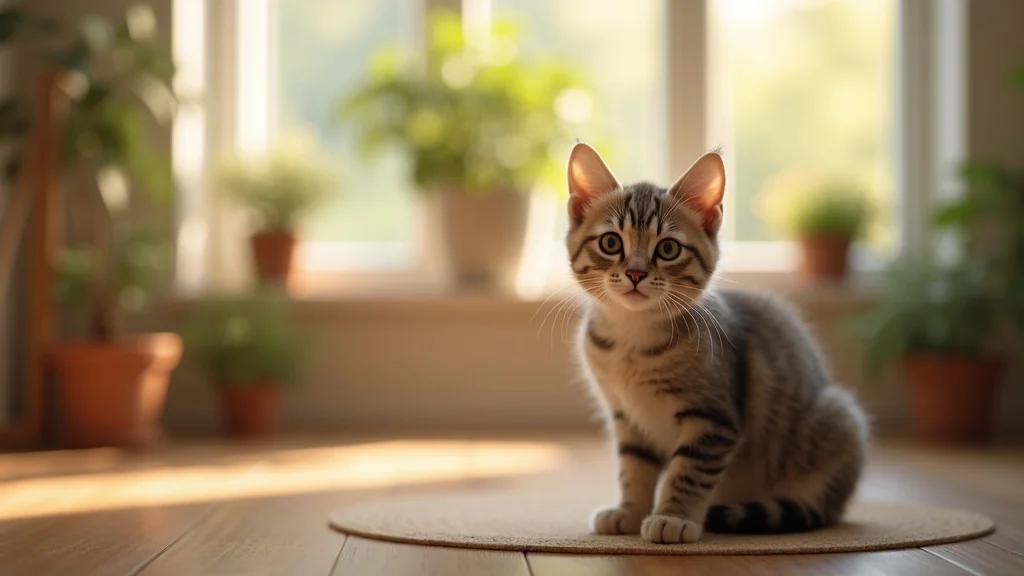
What You'll Learn in This Guide on Why Is My Cat Meowing So Much
- Common causes of excessive meowing in cats
- How to distinguish between normal cat meows and meowing excessively
- When to worry about your cat meowing
- Expert advice on calming a cat meowing loudly
- Breed-specific tendencies for meowing and yowling
Understanding Cat Meow Meanings: Why Cats Meow
The Purpose of Cat Meows: Communication with Humans
Cats are expert communicators, especially when it comes to using their voice to interact with people. While kittens use meows to talk to their mothers, adult cats reserve this particular vocalization almost exclusively for their human companions. When you hear a cat meow, it might mean anything from “feed me” to “play with me”—even “I’m not feeling well.” Each meow carries a different pitch, length, and intensity, giving clues to your cat’s mood and needs. Understanding these subtle differences in your cat’s language can help you address their needs quickly, deepening your bond and reducing unwanted meowing a lot around the house.
Some cats become more vocal as they age, while others develop a habit due to the response they receive. If you consistently respond to your cat’s chatter with food or attention, your cat learns to use vocalization as a tool for getting what they want. By tuning in to the patterns of your cat’s meows and considering their context—such as time of day, environment, and interaction with family members—you’ll become much better at telling when your cat is using their voice out of necessity rather than routine. This understanding is key to managing meowing excessively and supporting your cat’s wellbeing.
If you’re looking for more actionable steps to address your cat’s vocal habits, you might find it helpful to explore additional practical solutions for reducing excessive meowing that can make a real difference in your daily routine.
How Cat Breeds Influence Cat Meowing Patterns
Did you know that cat breeds play a significant role in how often a cat meows? Some breeds, like the Siamese, are infamous for their chatty, “talk-back” style. Siamese and Bengal cats often meow excessively, using a range of sounds to communicate excitement, curiosity, or even annoyance. Maine Coons, on the other hand, may use softer trills and chirps but can also be persistent about letting you know what they need. Understanding your cat’s breed tendencies will help set realistic expectations for their vocal behavior.
Not all breeds of cats are equally vocal, and your cat meowing might be completely normal—or it may indicate a problem if it’s out of character for their breed. Some cat breeds develop a reputation for being “silent observers,” like the Russian Blue or British Shorthair, while others, like Orientals and Burmese cats, seem to have a constant running commentary. Taking these patterns into account can prevent frustration and help you distinguish between normal breed behavior and signals for distress or discomfort.
Normal vs. Excessive Meowing in Cats: What’s the Difference?
Understanding the difference between a cat meow that’s normal and one that signals trouble is vital for every cat owner. Normal meowing occurs in response to everyday situations—like greeting you when you come home, or reminding you that dinner time is near. However, meowing excessively can mean your cat is experiencing stress, discomfort, or a health issue. Watch for changes such as meowing loudly for long periods, or vocalizations that seem different in tone or frequency.
If your cat starts meowing much more than usual or at odd hours, consider factors like new pets, moves, or alterations in their daily routine. Take note if your cat meows while using the litter box or when left alone. These situational cues can indicate underlying problems—from anxiety to pain—that may require attention. Trust your instincts: you know your cat’s typical voice best. If something seems off, it’s time to dig deeper to find—and fix—the root of the problem.
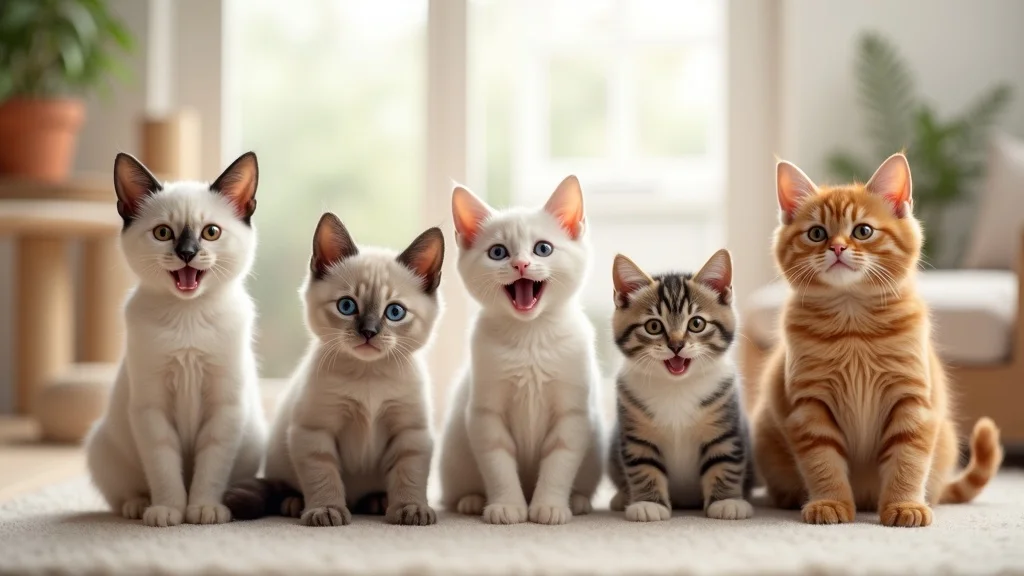
Common Reasons Why Is My Cat Meowing So Much
- Hunger or food-related requests
- Attention-seeking or boredom
- Stress, anxiety, or environmental changes
- Cat is meowing for medical or health reasons
- Territorial behavior and mating calls (including male cat tendencies)
- Cognitive dysfunction in senior cats
Often, the most common reason your cat meows a lot is hunger or anticipation of feeding. Many cats quickly learn that vocalizing is an effective way to remind you the water bowl needs filling or dinner is overdue. Others may engage in attention-seeking meowing out of boredom—if your home environment lacks stimulation or you’re often away, your cat could ramp up vocalizations to spark activity.
Stressful situations or big changes—like moving houses, introducing a new pet, or altered routines—can also trigger bouts of excessive meowing. Both male cats and female cats may vocalize due to hormones, especially if not spayed or neutered. In older cats, increased meowing can sometimes be traced to cognitive dysfunction, similar to dementia in humans, as well as age-related pain or confusion. Recognizing these triggers early is your best tool for maintaining harmony and promptly addressing any discomfort your cat may be signaling.
Medical Causes of Excessive Meowing in Cats
Common Health Issues: When Meowing Excessively Can Signal a Problem
Sometimes a cat meowing much more than usual is a sign of a health issue or medical condition. Certain illnesses, such as urinary tract infections, kidney disease, hyperthyroidism (an overactive thyroid), or pain from arthritis, can all lead to excessive meowing. These conditions may make your cat uncomfortable, restless, or anxious, prompting them to vocalize in search of relief or attention.
If your usually quiet cat starts meowing loudly, pacing, or suddenly changes their typical routines, a trip to the vet is in order. Medical problems can cause subtle changes before obvious symptoms appear, and cats often excel at hiding discomfort until it becomes severe. Keep an eye out for weight loss, changes in appetite, increased drinking, or problems using the litter box—these can be warning signs of deeper medical issues causing your cat to meow excessively.
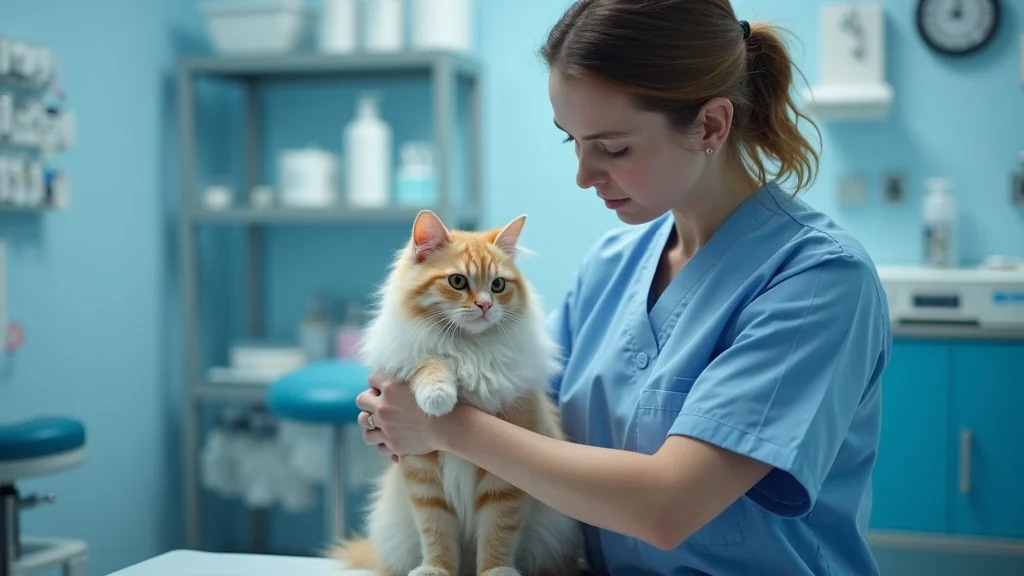
Meowing and Litter Box-Related Concerns
If your cat is meowing near the litter box or crying when using it, there could be underlying pain or discomfort. Medical conditions like urinary tract infections, constipation, or even blockages (commonly seen in male cats) can make bathroom routines troublesome and vocalize discomfort. This type of cat meowing shouldn’t be ignored—prompt veterinary attention is critical.
Sometimes, repeated meows around the litter area indicate dissatisfaction with cleanliness or location. Cats value tidy spaces for their personal needs, so ensure their box is clean and situated away from noisy or high-traffic areas. Subtle behavioral changes—swatting, digging excessively, or refusing to use the box—paired with meowing can help you pinpoint whether the problem is environmental or medical in nature.
Cognitive Dysfunction and Senior Cat Meows
As cats age, cognitive dysfunction—similar to Alzheimer’s in humans—becomes more common and can cause older cats to meow excessively for seemingly no reason. Your senior cat may appear disoriented, anxious, or have trouble navigating rooms they once knew well. Nighttime yowling or sudden vocalizations in quiet hours often indicate confusion and distress that accompany cognitive decline.
While aging can’t be reversed, your veterinarian can suggest strategies to help senior cats feel secure, such as keeping a consistent routine, using calming products, and providing safe, accessible spaces. Medications or supplements may ease some symptoms. Spotting the difference between disease and age-related changes ensures that your older cat gets the right kind of support as they adjust to life’s later stages.
Behavioral Causes for Why Is My Cat Meowing So Much
Cats Meow Due to Boredom, Loneliness, or Attention-Seeking
Many cats meow because they want playtime, interaction, or simply companionship—especially if they’re the only pet in the house. Adult cats accustomed to regular attention might begin meowing a lot if you suddenly get busier or spend less time at home. Boredom, lack of toys, or limited environmental enrichment can encourage cats to ramp up their vocalization as a call for engagement.
Combat this type of cat meowing by offering more play sessions, interactive toys, and puzzle feeders that keep their minds and bodies active. Scratching posts, climbing trees, or even a safe window perch for birdwatching can make a huge difference. Meeting your cat’s needs for activity and companionship is often the simplest way to quiet a persistently vocal cat—and makes life better for you both.
Separation Anxiety: Cat Meowing Loudly When Alone
Some cats develop separation anxiety and may meow loudly or even cry when left alone for extended periods. This is especially true if your cat is highly bonded to you or if you’ve had major routine changes (like returning to the office after working from home). Persistent vocalization, destructive behaviors, or inappropriate elimination can all be signs your cat is meowing out of emotional distress.
Try leaving out worn clothing with your scent, using pheromone diffusers, or providing soothing music. Gradually increasing alone time, combined with positive reinforcement when your cat stays calm, can help ease their anxiety. If these strategies don’t reduce the vocalizations, consult your veterinarian or an animal behaviorist to explore further solutions for your cat’s peace of mind.

Environmental and Lifestyle Factors Influencing Cat Meowing
How Changes in Routine Can Cause Cat Meowing
Cats thrive on predictable routines, and any major disruption—like travel, new family members, change in feeding times, or even moving furniture—can result in excessive meowing. If your cat meows more after a disruption, it’s likely their way of expressing confusion or requesting reassurance. Even subtle changes, like altering cleaning products or rearranging their favorite lounging spots, can unsettle sensitive felines.
Restoring consistency is key: feed at the same times, stick to regular play routines, and keep the environment calm. Cats quickly adapt to new normals if change is gradual and you maintain clear, reassuring boundaries. Rewarding calm behavior and investing time in gentle interaction reassures your pet that their world is still safe, which should help decrease unnecessary vocalizations.
Multi-Pet Households and Cat Meows
If you share your home with multiple pets, cat meowing may be linked to competition for resources or territory. Cats often vocalize to establish dominance, request attention, or express discomfort about sharing spaces with other animals—be it another cat or even a dog. You may notice that the cat meows more around feeding times, when using the litter box, or during play sessions involving other pets.
Ensuring each pet has access to their own resources—bowls, litter boxes, and cozy hiding places—can help reduce stress-related meowing. Supervise interactions, especially with new additions, and provide individual attention to each companion animal. If meowing persists or escalates to aggression, consider consulting a behaviorist to mediate harmony within your furry family.
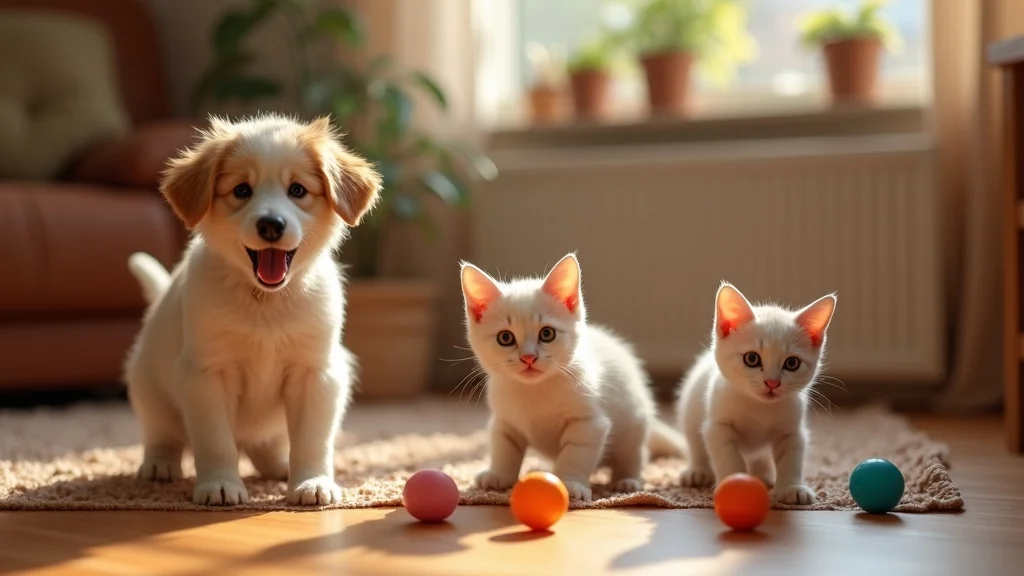
Noise, Sights, and the Role of Stimuli in Excessive Meowing
A cat’s keen senses mean noisy environments or stimulating sights—like wildlife out the window or frequent household visitors—can trigger meowing excessively. Sudden loud sounds, fireworks, or even new construction nearby can startle your cat, leading to vocal outbursts as they communicate alertness or fear.
Reducing harsh stimuli, offering safe retreats, and providing background noise like soft music can help some cats relax. Observe your cat’s behavior patterns: if specific noises or views from a window always set them off, altering the environment or providing distractions may help quiet unnecessary meowing. For especially anxious felines, products like pheromone diffusers or weighted vests might offer further comfort.
Breed-Specific Tendencies: Cat Breeds and Why They Meow So Much
| Cat Breed | Meowing Frequency | Common Vocal Traits |
|---|---|---|
| Siamese | Very High | Loud, persistent, yowling, loves to "chat" |
| Bengal | High | Lively, expressive, chirps, and meows |
| Maine Coon | Moderate | Trills, chirps, occasional loud meows |
| Russian Blue | Low | Usually quiet, soft, gentle meows |
| Oriental Shorthair | High | Talkative, responds vocally to attention |
As shown above, cat breeds play a major role in how often a cat meows. If your Siamese or Bengal is vocal, it’s part of their personality, while quieter breeds signal differently. Always factor in both breed tendencies and individual quirks when assessing what’s driving your cat’s unique voice.
How to Respond: Solutions for Why Is My Cat Meowing So Much
- Check your cat’s health with a veterinarian
- Provide physical and mental enrichment to reduce excessive meowing
- Keep a consistent daily routine
- Positive reinforcement: Reward quiet behavior
- Addressing meowing and yowling in male cats specifically
If you’re ready to stop meowing from becoming a constant headache, start with a health check. Even healthy cats benefit from a routine vet visit to rule out subtle medical conditions often hidden by their stoic nature. Next, invest in enrichment: play regularly, introduce variety in toys, use puzzle feeders, and provide scratching surfaces or high perches. These meet natural needs to hunt, climb, and explore, effectively reducing excessive meowing.
Stick with predictable routines, feeding and playing at set hours, to help cats cope with anxiety and uncertainty. When your cat meows, pause—wait for a quiet moment, then offer treats or affection. This reinforces calm, silent behavior without accidentally rewarding noisy demands. For male cats, especially those not yet spayed or neutered, addressing hormonal behaviors (like meowing and yowling during mating season) often requires a veterinary visit to discuss options that can improve quality of life for both you and your furry friend.
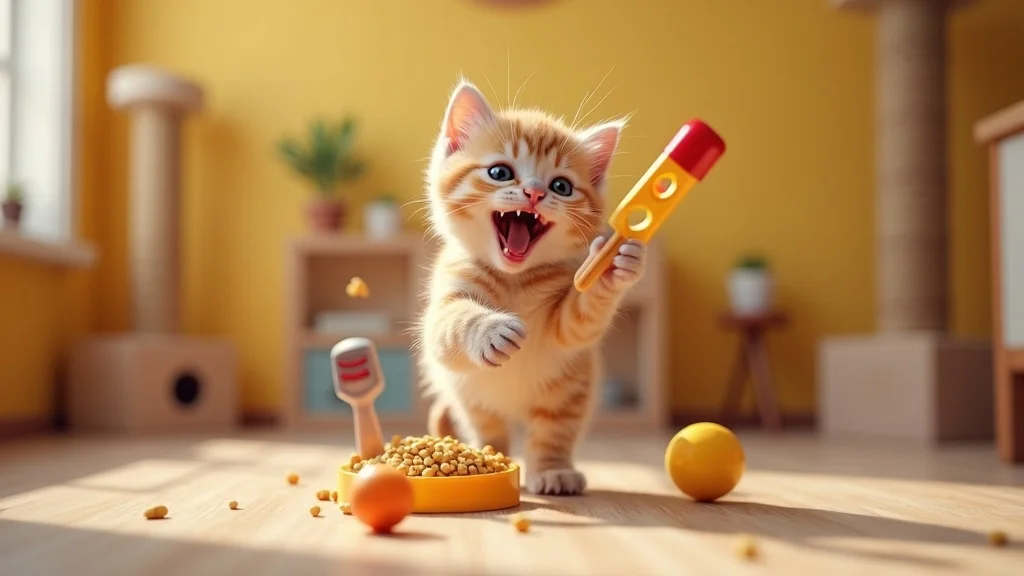
What Not to Do If Your Cat Is Meowing Excessively
- Don’t punish or yell at your cat
- Avoid ignoring potential medical issues
- Don’t reinforce negative meowing accidentally
It’s tempting to ignore your cat when frustrated by non-stop noise, but punishment or yelling will only increase anxiety—and the cat meowing. Similarly, never overlook the possibility of pain or illness: behind every persistent cat meow could be a medical issue needing veterinary attention. Even well-meaning owners can accidentally reward noisy behavior by rushing to feed, play, or cuddle every time their cat is meowing. Instead, respond when your cat is calm to promote the behaviors you want to see more often.
When to Seek Veterinary Advice About Your Cat Meowing
- Warning signs: Meowing loudly, sudden behavioral changes, or distress
- Cognitive dysfunction and aging-related meowing
If your cat suddenly starts meowing far more than usual, with signs of pain, disorientation, or changes in eating, drinking, or litter box usage, contact your veterinarian. Vocal signals in senior cats should also be investigated, as cognitive dysfunction and illness become more common with age. Trust your gut—early intervention often means better outcomes.
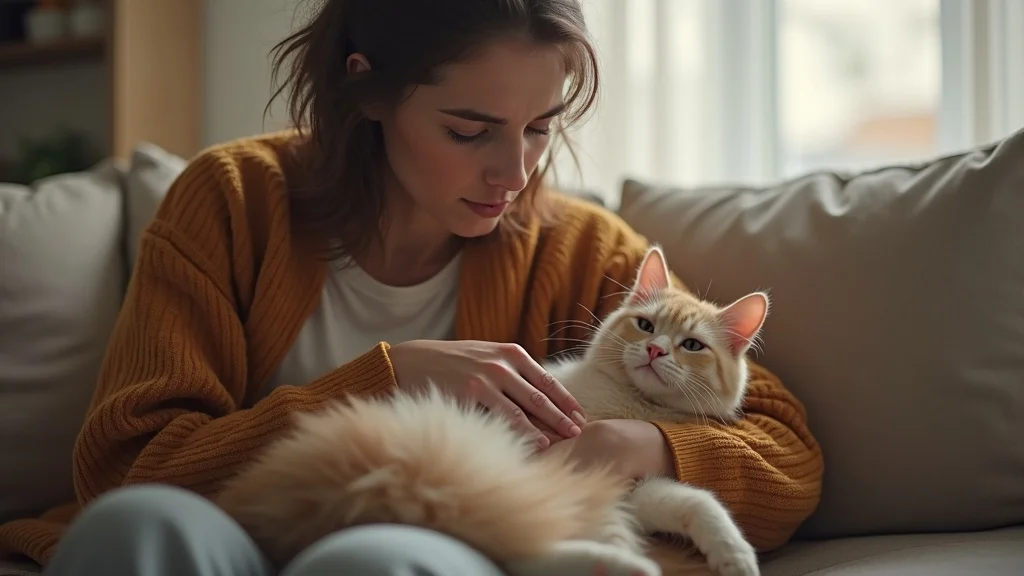
Expert Insights and Quotes on Why Is My Cat Meowing So Much
"If your cat’s vocalizations seem out of character, always err on the side of caution and consult your veterinarian." – Dr. Elaine Casey, DVM
Leading veterinarians and feline behaviorists agree: never ignore a cat meowing that feels unusual for your pet. Excessive or out-of-character vocalizations are your cat’s way of asking for help, whether it’s medical, emotional, or environmental. Listening closely not only helps prevent small problems from escalating but also strengthens the trust between you and your favorite feline.
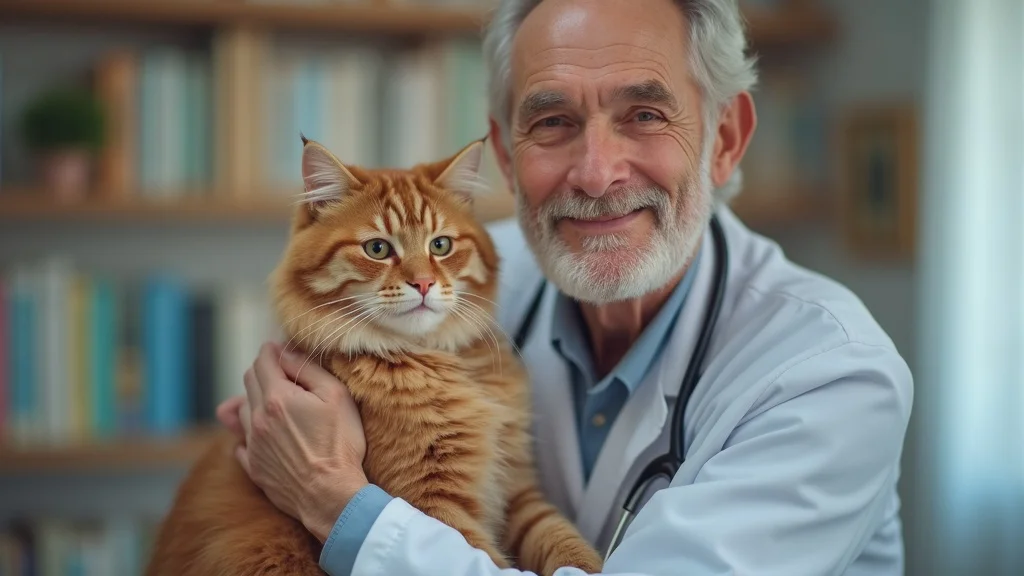
People Also Ask: Why Is My Cat Meowing So Much?
Why is my cat meowing for no reason?
While it may seem your cat is meowing for “no reason,” there’s almost always a cause. Cats meow to communicate needs or feelings, whether it’s hunger, boredom, loneliness, anxiety, or even pain. Sometimes, cats vocalize out of habit, especially if attention or treats frequently follow a meow. If your cat’s meowing frequency or tone changes suddenly, or is paired with other symptoms, investigate further to ensure it’s not a health or environmental issue.
How do I get my cat to shut up?
It’s normal to want peace and quiet! To minimize your cat’s meowing, first rule out illness by visiting the vet. After that, establish consistent feeding, play, and interaction routines. Use toys and mental stimulation to occupy your cat’s mind, and reward quiet periods with treats or affection. Never yell or punish—these responses can increase anxiety and, ultimately, meowing. Instead, patience, routine, and enrichment are the keys to happier, quieter cats.
Why is my cat walking around the house crying?
A cat patrolling the house while meowing or crying often signals distress, restlessness, or frustration. Common causes include searching for a family member, being in heat (for non-neutered cats), feeling bored, or responding to changes in the environment. Occasionally, this behavior can hint at pain or an underlying medical condition. Observe for other symptoms and consult your vet if the crying persists or is accompanied by unusual behaviors.
When should I be concerned about my cat meowing?
Concern is warranted if your cat’s meowing is sudden, constant, or comes with other warning signals like lethargy, appetite loss, changes in litter box habits, or signs of pain. Especially in older cats or those with chronic conditions, increased vocalization could indicate illness, cognitive dysfunction, or anxiety. If in doubt, always seek veterinary guidance—catching issues early can make a world of difference.
FAQs About Why Is My Cat Meowing So Much
- How much meowing is normal for my cat? — Every cat is unique, but most meow only when they need something. If the frequency changes or seems non-stop, evaluate for boredom, hunger, or medical concerns.
- Do certain cat breeds meow more than others? — Yes! Breeds like Siamese, Bengal, and Orientals are especially vocal, while others, like Russian Blues and Persians, are much quieter.
- Should I worry if my male cat is meowing excessively? — Frequent, loud meowing in male cats (especially if unneutered) can signal hormones, stress, or even a medical blockage. Monitor closely and consult your vet if it persists.
- What can I do to reduce cat meowing at night? — Keep play sessions and meals on a schedule, offer late-evening activity, and ensure your cat’s needs are met before bedtime. Calm reassurance helps many cats settle overnight.
Key Takeaways: Why Is My Cat Meowing So Much?
- Learn what triggers cat meowing and when to seek help
- Not all cat meows are cause for alarm: context matters
- Consistent routines and vet visits can minimize excessive meowing
Conclusion: Understanding and Responding to Why Is My Cat Meowing So Much
Understanding your cat’s meows means better care, greater peace, and a stronger human-feline bond. Stay attentive—your cat is only a meow away from telling you what they need!
If you’re eager to deepen your understanding of feline communication and discover even more ways to create a peaceful home, consider exploring our comprehensive overview on achieving harmony with your cat’s meowing. This resource goes beyond the basics, offering strategic insights and advanced tips for nurturing a calm, contented relationship with your pet. By broadening your knowledge, you’ll be better equipped to interpret your cat’s needs and foster a truly harmonious environment. Take the next step in your cat care journey and unlock new levels of understanding and tranquility for both you and your feline companion.
Stay Informed About Cat Meowing and More
Want more tips, stories, and pet care guides delivered straight to your inbox? Join our monthly PawPress newsletter and stay in the loop with the latest for your furry friends. 🐾 Subscribe now — your pets will thank you!
Understanding why your cat is meowing excessively is crucial for addressing their needs and ensuring their well-being. To delve deeper into this topic, consider exploring the following authoritative resources:
-
“Why Is My Cat Meowing So Much? | PetMD”: This comprehensive guide outlines various reasons for increased vocalization in cats, including medical conditions like hyperthyroidism and behavioral factors such as attention-seeking. It also offers practical advice on when to consult a veterinarian. (petmd.com)
-
“Meowing and Yowling | ASPCA”: The ASPCA provides insights into common causes of excessive meowing, ranging from greeting behaviors to stress responses. The article emphasizes the importance of understanding your cat’s vocal patterns and offers guidance on how to respond appropriately. (aspca.org)
By consulting these resources, you can gain a more nuanced understanding of your cat’s vocal behavior and learn effective strategies to address excessive meowing.
 Add Row
Add Row  Add
Add 




Write A Comment